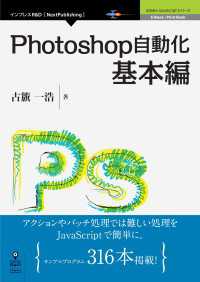Full Description
This book introduces a research method called 'auto-teach(er)/ing-focused research,' a research process that aims to document understandings generated by, and for the teacher when that teacher teaches or re-teaches a course. It demonstrates how this method is applied by the author/researcher within the pedagogical space that is the teaching of a course, one that has been taught numerous times by the author/researcher over many years. This book documents understandings about learning and teaching that have emerged within the pedagogical space that is the teaching of a course, and the pedagogical space that is the writing of a book. It explores the notion that pedagogical spaces are complex, and that subjects navigate and are produced within them in a multiplicity of ways. This book applies a research method that generates a knowledge product that research practitioners in a variety of settings might find useful to adopt or adapt.
Contents
Begin.- What is a school?.- Thinking about learning - before during and after.- What do learners do? Where, when and/or how does learning play out? Some ideas Michael Crowhurst and Michael Emslie.- Designing for learning - shorter time frames.- Designing for learning - longer time frames.- Learner multiplicities and learning spaces and events - assessing a dance Michael Crowhurst and Michael Emslie.- Theory towards expansion - generativities multiplicities Michael Crowhurst and Michael Emslie.- Theory towards expansion - dialogue emergence combinations.- Conclusion - complex spaces, learning events and learners.- Notes on the pedagogical space that is the book after inhabiting it - dis/orientations.







